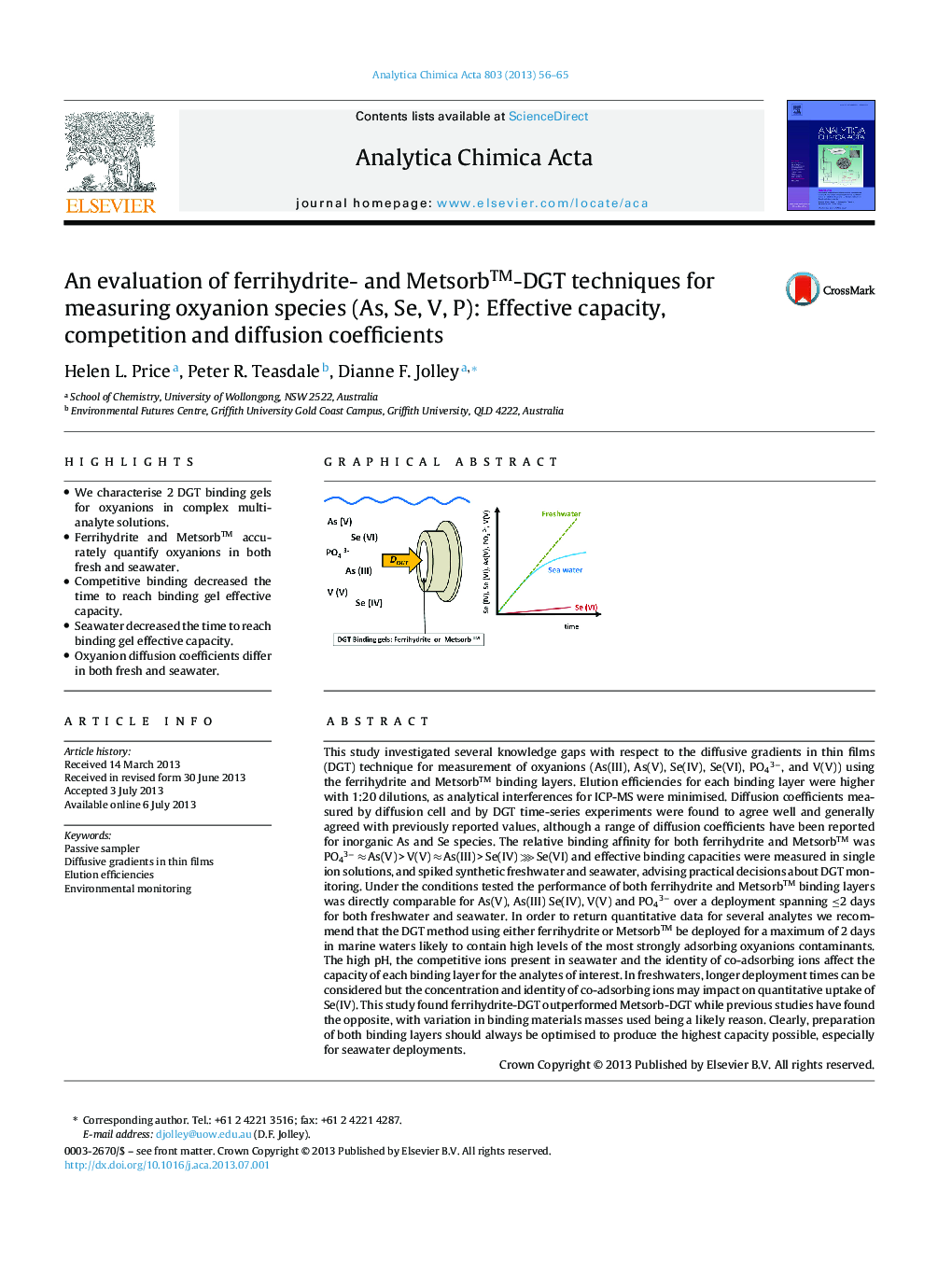| کد مقاله | کد نشریه | سال انتشار | مقاله انگلیسی | نسخه تمام متن |
|---|---|---|---|---|
| 1164336 | 1491029 | 2013 | 10 صفحه PDF | دانلود رایگان |

• We characterise 2 DGT binding gels for oxyanions in complex multi-analyte solutions.
• Ferrihydrite and Metsorb™ accurately quantify oxyanions in both fresh and seawater.
• Competitive binding decreased the time to reach binding gel effective capacity.
• Seawater decreased the time to reach binding gel effective capacity.
• Oxyanion diffusion coefficients differ in both fresh and seawater.
This study investigated several knowledge gaps with respect to the diffusive gradients in thin films (DGT) technique for measurement of oxyanions (As(III), As(V), Se(IV), Se(VI), PO43−, and V(V)) using the ferrihydrite and Metsorb™ binding layers. Elution efficiencies for each binding layer were higher with 1:20 dilutions, as analytical interferences for ICP-MS were minimised. Diffusion coefficients measured by diffusion cell and by DGT time-series experiments were found to agree well and generally agreed with previously reported values, although a range of diffusion coefficients have been reported for inorganic As and Se species. The relative binding affinity for both ferrihydrite and Metsorb™ was PO43− ≈ As(V) > V(V) ≈ As(III) > Se(IV) ⋙ Se(VI) and effective binding capacities were measured in single ion solutions, and spiked synthetic freshwater and seawater, advising practical decisions about DGT monitoring. Under the conditions tested the performance of both ferrihydrite and Metsorb™ binding layers was directly comparable for As(V), As(III) Se(IV), V(V) and PO43− over a deployment spanning ≤2 days for both freshwater and seawater. In order to return quantitative data for several analytes we recommend that the DGT method using either ferrihydrite or Metsorb™ be deployed for a maximum of 2 days in marine waters likely to contain high levels of the most strongly adsorbing oxyanions contaminants. The high pH, the competitive ions present in seawater and the identity of co-adsorbing ions affect the capacity of each binding layer for the analytes of interest. In freshwaters, longer deployment times can be considered but the concentration and identity of co-adsorbing ions may impact on quantitative uptake of Se(IV). This study found ferrihydrite-DGT outperformed Metsorb-DGT while previous studies have found the opposite, with variation in binding materials masses used being a likely reason. Clearly, preparation of both binding layers should always be optimised to produce the highest capacity possible, especially for seawater deployments.
Figure optionsDownload as PowerPoint slide
Journal: Analytica Chimica Acta - Volume 803, 25 November 2013, Pages 56–65